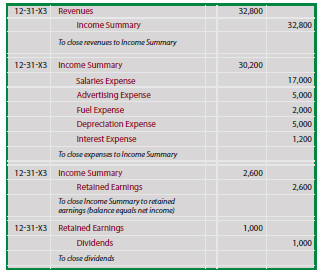
This generally takes place at the end of the month as part of the account closing process. This would be immediately before a business puts out its monthly financial statements. We refer to them as bank, vendor, customer, business-specific, and intercompany reconciliation. If you use accounting software you can skip this step, as it’s completed automatically. However, if you’re managing your accounts manually, you’ll need to reconcile your general ledger balance to your sub-ledger balance.
How Often Should Individuals Reconcile Their Bank Statements?

Wave is a simple solution for very small businesses that need a place to consolidate bookkeeping records and invoices, but don’t have to log more than a handful of transactions each day. The free version of the accounting software lets you track income and expenses, send unlimited invoices https://www.quick-bookkeeping.net/ and automatically send reminders for late online payments. It also gives you access to more than a dozen pre-built financial reports, including a profit and loss statement and balance sheet. One account will get a debit, and the other account will receive a credit for the same transaction.

What Is an Example of Accounting Reconciliation?
By leveraging technology for more efficient reconciliation processes, lawyers can save time and greatly reduce the chance of error. The goal of bank reconciliation is to check that ending balances match on both your bank statement and your records. Should there be any discrepancies that come up through the reconciliation process, you can then take action to resolve them. Bank reconciliation done through accounting software is easier and error-free. The bank transactions are imported automatically allowing you to match and categorize a large number of transactions at the click of a button. Prior to issuing a company’s financial statements, it is wise to reconcile every balance sheet account by collecting the information that supports the accounts’ ending balances.
Types of Account Reconciliations
Please contact an accountant, attorney, or financial advisor to obtain advice with respect to your business. An investigation may determine that the company wrote a check for $20,000, which still needs to clear the bank. In this case, a $20,000 timing difference due to an outstanding check should be noted in the reconciliation.
Physical inventory does not match with inventory records

It helps you follow basic accounting principles so that you can keep your books up to date and in order, which is especially important come tax season. Most software uses double-entry accounting, meaning it factors in assets, liabilities and equity, in addition to revenue and expenses. Accounting software helps you track how money moves in and out of your small business. The best accounting software makes it easy to keep a detailed financial record so that you’re ready come tax season.
Why accounting reconciliation matters for businesses
If you don’t want to manually enter transactions into Wave, you can opt for the Pro plan to link an unlimited number of bank and credit card accounts for automated reconciliation. The paid plan offers more competitive online payment processing rates, too (starting at 2.9% per transaction vs. the free plan’s 2.9% + $0.60 per transaction). Easily run financial statements that show exactly where your business stands.
- Wave is a simple solution for very small businesses that need a place to consolidate bookkeeping records and invoices, but don’t have to log more than a handful of transactions each day.
- By reconciling financial records, such as bank statements, invoices and receipts, businesses can identify discrepancies and irregularities and protect themselves against potential fraud.
- Transactions that impact a company’s bottom line — net income — are split between accounts on the balance sheet and the income statement.
The company reconciles its accounts every year to check for any discrepancies. This year, the estimated amount of the expected account balance is off by a significant amount. Later that day, you get an urgent text from your bank that your account is how to do payroll accounting overdrawn by $5,000. If you had performed regular bank reconciliations, you would have known about that check and to keep your eyes peeled for it. Reconciliation can help you monitor your cashflow so you have enough to cover your business needs.
It makes sure that fixed asset and accumulated depreciation balances accurately offset each other in the general ledger. After 60 days, the Federal Trade Commission (FTC) notes, you’ll be liable for “All the money taken from your ATM/debit card account, and possibly more—for example, money in accounts linked to your debit account.” This type of account reconciliation makes it possible to check for errors and detect any possible fraud. It’s also a good way for someone to get an overall picture of their spending. Tick all transactions recorded in the cash book against similar transactions appearing in the bank statement.
Reconciliation is typically done at regular intervals, such as monthly or quarterly, as part of normal accounting procedures. Reconciliation ensures that accounting records are accurate, by detecting bookkeeping errors and fraudulent transactions. The differences may sometimes be acceptable due to the timing of payments and deposits, but any unexplained differences may point to potential theft or misuse of funds. Account reconciliation is a vital process that helps businesses maintain their financial health by identifying errors, preventing fraud, and ensuring the validity and accuracy of all financial statements.
Bank errors don’t occur very often, but if they do, the proper amount needs to be added or subtracted from your account balance, and you should contact the bank immediately to report the error. In both cases where mistakes are identified as a result of the reconciliation, adjustments should be undertaken in order for the account balance to match the supporting information. This one doesn’t have to be a comparative https://www.kelleysbookkeeping.com/what-are-the-five-basic-accounting-assumptions-top-5-accounting/ trial balance, because you’re only interested in checking the new balances after all your journal entries have been completed. Be sure recurring journal entries and reversing entries have been completed. Reconciliation can uncover discrepancies or unauthorized transactions, which may indicate fraudulent activities. Detecting fraud early can prevent financial losses and damage to an organization’s reputation.
Feature set includes an excellent mobile app and suite of reports, capable invoicing features, plus automated bill and receipt capture through Hubdoc. Our partners cannot pay us to guarantee favorable reviews of their products or services. We know that taking hours to find amounts that are off by a few pennies doesn’t make sense.
The important thing is to establish internal processes for account reconciliation and adhere to those processes. These steps can vary depending on what accounts you are reconciling, but the underlying premise is always the same – compare your ending balance against supporting documentation and make any adjustments as needed. Balance sheets and profit and loss statements are both essential resources for determining the financial health of your business.
Find out how it all works as we examine the benefits of different types of reconciliation in accounting. Sure, there are a number of professionals that can provide expertise in this task, the most obvious being an accountant. If you decide to hire someone to help, make sure they are following GAAP, or have credentials and experience that you trust. However, if you decide to tackle the task on your own you can save a lot of money.
For example, while performing an account reconciliation for a cash account, it may be noted that the general ledger balance is $500,000. Still, the supporting documentation (i.e., a bank statement) says the bank account has a balance of $520,000. Account reconciliation is a process that involves identifying discrepancies between business ledgers and outside source documents. Accuracy and strict attention to detail are the fundamental principles of this process. Various factors, such as timing differences, missing transactions, and mistakes can cause these discrepancies. Most account reconciliations are performed against the general ledger, considered the master source of financial records for businesses.
